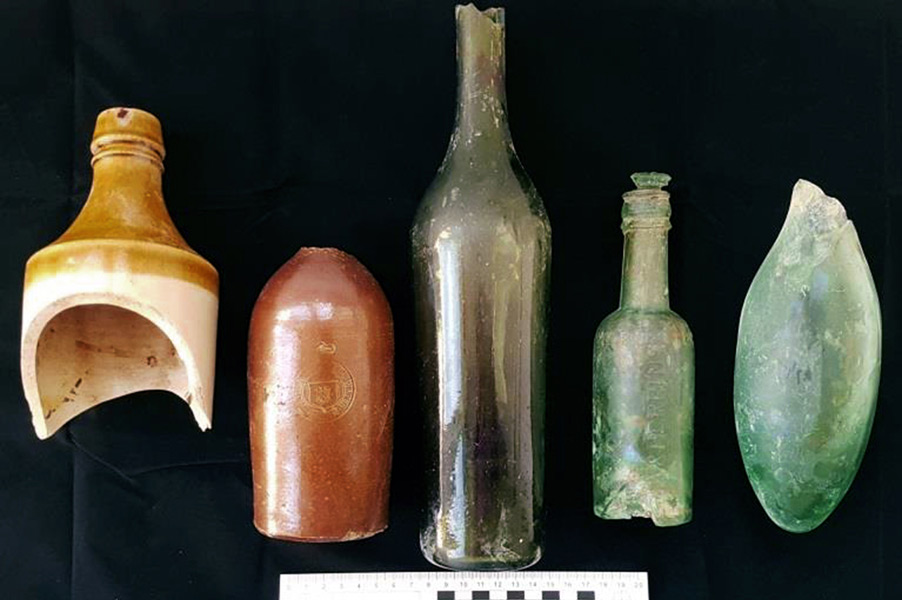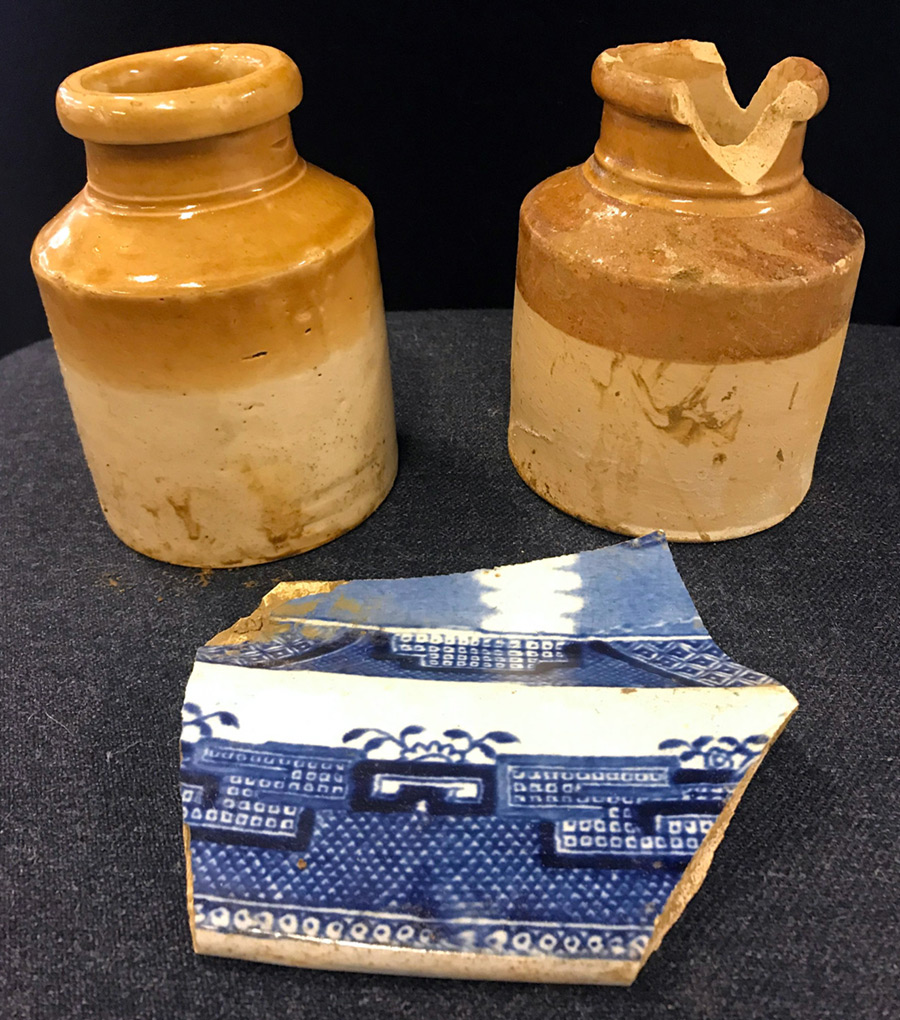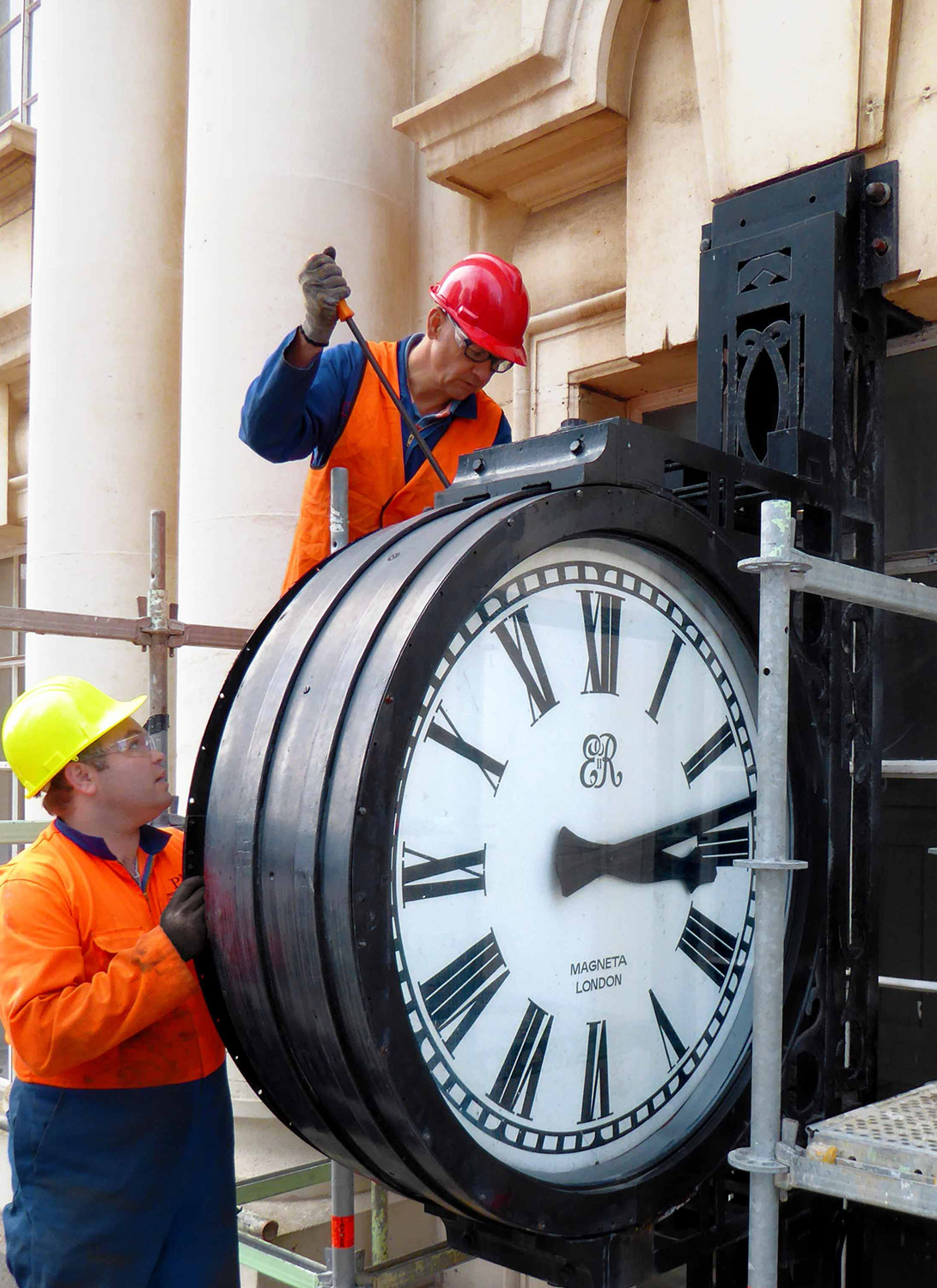Converting Britomart station from a dead-end to a through-station has provided an opportunity to contribute to cultural sustainability.
The project is conserving the built heritage of the historic Chief Post Office (CPO) as well as literally digging into the area's past.
Under the streets
The project employs an archaeologist to document, and where appropriate preserve, archaeological finds.
During the early reclamation of the Waitemata Harbour, household rubbish and building debris was thrown in (along with the fill from the 1859 demolition of nearby Smales Point).
This household rubbish is the likely source of the hand-made ginger beer bottle uncovered during the excavation.
Because the maker’s mark – Fowler – was stamped on the bottle, the project archaeologist was able to trace the artefact back to Enoch Fowler, who arrived in Sydney in 1836 as a free settler from Tyrone, Ireland, and made ginger beer bottles and kitchenware.


Britomart Transport Centre
Most of Britomart was underwater until the 1870s. It is now on reclaimed land in the middle of what was once Commercial Bay.
The Britomart Station building was Auckland’s Chief Post Office (CPO) before being re-purposed as a train station, and is a Category 1 listed heritage building.
Construction teams are working meticulously, in association with Heritage NZ, to make sure the heritage aspects of the interior are not impacted by the work needed to modify the building from a dead-end to a through station.





The original features of the building, such as the pillars, ceiling and skylights were protectively wrapped, and the entire building monitored by the cyclops system to ensure no excessive movement occurs as the building is underpinned and the tunnels built.
Albert Street excavation
Early excavations on Albert Street unearthed some of Auckland’s early utilities, providing a glimpse into how infrastructure was built in the past.
The answer, it seems, is with brick.
DISCOVERED: Disused brick barrel drain in the CRL construction shaft in Victoria Street looking southeast. (Photo: Clough & Associates Ltd.)
The most interesting piece of infrastructure unearthed is a disused brick barrel drain found while excavating the construction shaft on Victoria Street to bore a new stormwater main.
When a cross-section was cut it was found that the drain had been constructed using two layers of brick to form an inverted egg shape measuring 500mm wide by 730mm tall. This shape was favoured by Victorian drainlayers as it is strong, self-cleaning (because of the relatively high flow speed at low volumes), and requires a smaller excavation width than a circular drain, which was important when being dug by hand!
Perhaps unsurprisingly it appears that the amount of excavation which was undertaken to construct the drain appears to be the least amount possible, with only 50mm of disturbed earth on either side. This is an approach modern drainlayers could do well to emulate as it reduces the amount of diesel, and associated greenhouse gases, needed to excavate and transport spoil and backfill.
Judging by the type of bricks used, and its location, the archaeologist believes the drain was probably installed around the same time as the Albert Street main drain and therefore dates after 1864/65. This would put its construction around 25 years after the signing of the Treaty of Waitangi and the European settlement of Auckland, a time when the city’s population was approximately 12,000.

